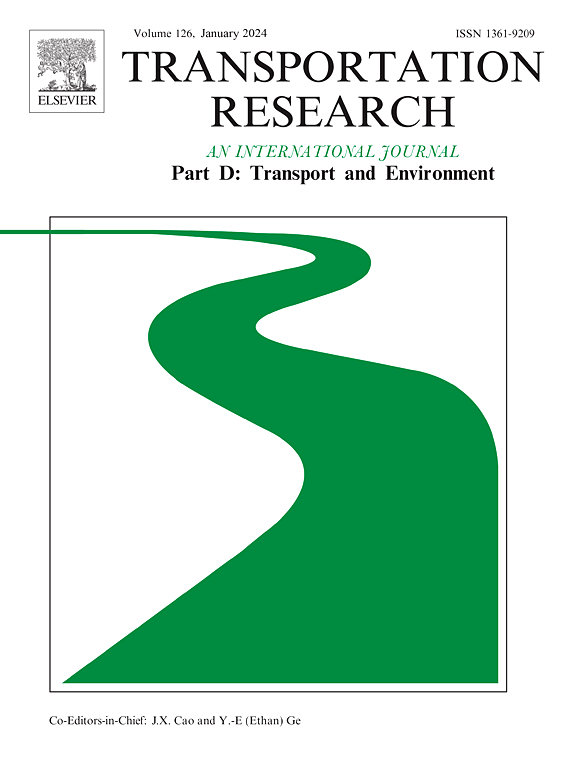Synergistic role of audio-visual perceptions in promoting bikeshare for active travel
IF 7.3
1区 工程技术
Q1 ENVIRONMENTAL STUDIES
Transportation Research Part D-transport and Environment
Pub Date : 2025-05-21
DOI:10.1016/j.trd.2025.104806
引用次数: 0
Abstract
This study examines factors beyond macroscale built environments (BE) influencing cycling behavior, integrating both microscale visual and auditory perceptions, especially soundscapes, while their impacts on cycling have not been explicitly investigated. Leveraging massive bikeshare trip data in Shenzhen, China, this study employs spatial explainable machine learning to uncover the associations among these three dimensions and cycling behavior using a multi-scale analytical framework. The results show that: (1) Macroscale BE remains dominant, while micro-scale soundscapes outweigh visual perceptions in explaining cycling usage. (2) Both perceived streetscape and soundscape indicators exhibit significant nonlinear effects on cycling behavior. (3) Synergistic interactions between visual streetscape and soundscape are observed, where maintaining audio-visual consistency (e.g., high perceived safety with high natural sounds perception) can positively affect cycling more substantially. Our findings encourage planners to prioritize strategic micro-level modifications targeting perceived street visual and auditory aspects over conventional macroscale BE interventions as cost-effective alternatives.
视听感知在促进共享单车积极出行中的协同作用
本研究考察了宏观尺度建筑环境(BE)之外影响骑行行为的因素,整合了微观尺度的视觉和听觉感知,尤其是声景,而它们对骑行的影响尚未得到明确的研究。本研究利用中国深圳的大量共享单车出行数据,采用空间可解释的机器学习方法,利用多尺度分析框架揭示这三个维度与骑行行为之间的关联。结果表明:(1)宏观尺度的BE仍然占主导地位,而微观尺度的声景在解释循环使用方面优于视觉感知。(2)感知街景和声景指标对骑行行为均表现出显著的非线性影响。(3)视觉街道景观与声景观之间存在协同作用,保持视听一致性(例如,高感知安全性与高自然声音感知)可以更实质性地积极影响骑行。我们的研究结果鼓励规划者优先考虑针对感知到的街道视觉和听觉方面的战略性微观修改,而不是传统的宏观BE干预,作为具有成本效益的替代方案。
本文章由计算机程序翻译,如有差异,请以英文原文为准。
求助全文
约1分钟内获得全文
求助全文
来源期刊
CiteScore
14.40
自引率
9.20%
发文量
314
审稿时长
39 days
期刊介绍:
Transportation Research Part D: Transport and Environment focuses on original research exploring the environmental impacts of transportation, policy responses to these impacts, and their implications for transportation system design, planning, and management. The journal comprehensively covers the interaction between transportation and the environment, ranging from local effects on specific geographical areas to global implications such as natural resource depletion and atmospheric pollution.
We welcome research papers across all transportation modes, including maritime, air, and land transportation, assessing their environmental impacts broadly. Papers addressing both mobile aspects and transportation infrastructure are considered. The journal prioritizes empirical findings and policy responses of regulatory, planning, technical, or fiscal nature. Articles are policy-driven, accessible, and applicable to readers from diverse disciplines, emphasizing relevance and practicality. We encourage interdisciplinary submissions and welcome contributions from economically developing and advanced countries alike, reflecting our international orientation.

 求助内容:
求助内容: 应助结果提醒方式:
应助结果提醒方式:


